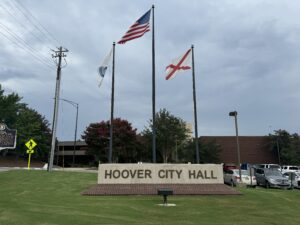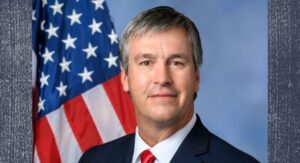Baldwin County Senate candidate Jason Fisher says ‘wait’ on Bridge to Nowhere
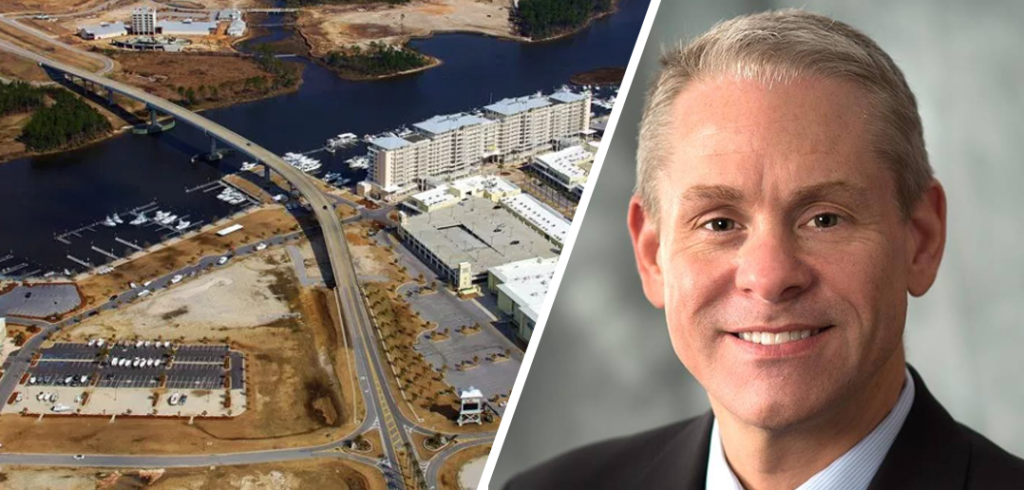
Questions over a proposed new bridge to the beach continue in Baldwin County. The debate has pitted local residents and taxpayer advocates from around the state against Alabama Department of Transportation’s Secretary John Cooper and several local mayors. At issue is a $87 million state-funded, competing bridge to the Foley Beach Express with opponents insisting it is a waste of taxpayer funds that will be diverting much-needed state resources away from other critical state infrastructure projects while not addressing the true transportation and infrastructure needs of the community while proponents say they’re tired of paying tolls and believe the new bridge will solve traffic problems. Orange Beach Mayor Tony Kennon says there is a pressing need for the bridge — “We have to be able to move traffic, we’ve got to be able to evacuate and we have to be able to grow,” Kennon told AL.com. “One bridge with a toll does not help us do that.” — others believe people are being misled to think the bridge is a necessary solution to the traffic congestion. Democrat Jason Fisher, a longtime resident of the Gulf Coast of Alabama State Senate candidate for District 32, says he understands the need for a bridge, but he too has concerns over the bridge plan. In a statement provided to Joe Emerson, the founder of the Facebook group dedicated to stopping what he dubbed “End The #Bridge2Nowhere“, one of the projects leading local opponents, a Fisher campaign volunteer responded to a request for Fisher’s position on the bridge by saying, “Jason understands the need for a third bridge, but has concerns that the current plan has not been thoroughly vetted from a cost and environmental standpoint. He is in favor of further studies before moving the project further.” Fisher further explained his position to Alabama Today in a statement: “The main issue I have is that the project was approved by the Governor’s administration without a full cost scope and impact analysis,” said Fisher. “I live in Orange Beach and am fully aware of the heavy traffic. Our infrastructure on the island is inadequate compared to the amount of people and traffic during peak tourist seasons. A third bridge may indeed be necessary. However, based on the reporting I have read, no controlled studies were ever completed by government officials. I cannot support a project, necessary as it may be, that is not fully scoped and vetted before a price tag of $87 million is approved.” Fisher’s concerns echo those of State Auditor Jim Zeigler who has posed questions on the cost and necessity of the bridge for months. It is unclear what the status of the bridge is as of early September a spokesman for ALDOT said that they were not releasing information because of a pending lawsuit related to the bridge. We have asked for additional information on that lawsuit and will update our readers when we are able to provide more details.
Another chance to talk about mental health
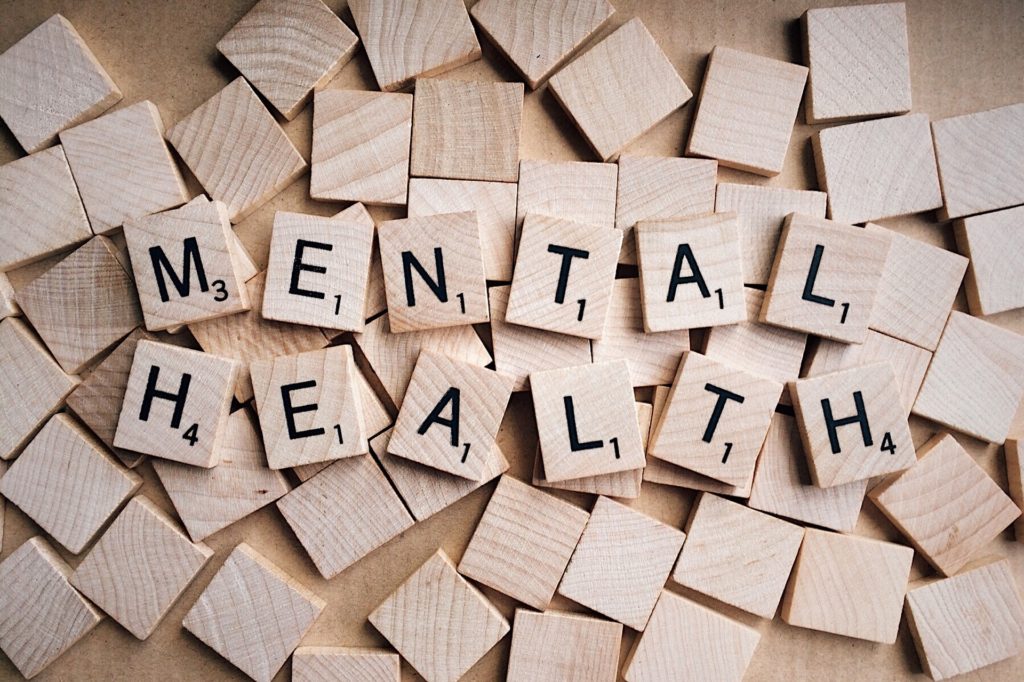
Today’s World Mental Health Day, as if I needed another reason to write or talk about the challenges we face as a society and as a state addressing mental health care. From mental health care funding and destigmatizing the issues, we have got to do better. I encourage you on this day to look around you, and speak up, and talk about your own issues, issues that have affected your friends/family. Go and call and check in on a friend who you know has been struggling. If you have the resources to donate to cause that supports mental illness, do that. If you have children, I urge you to take a minute to check in on them and talk to them about mental illness, depression, anxiety, bullying, happiness and all of the things we sometimes take for granted or ignore. Today is a day like every other day where there are people around us suffering in silence. Suffering themselves. Suffering because they are the primary care givers for a loved one who has untreated mental illness or possibly mental illness that is being treated but still causes them a lot of stress and anxiety. We have a long way to go in our country in the way in which we address issues of the mind and illness we can’t see and don’t understand. We have a long way to go as a state in the way that we fund treatment. I urge you, or remind you, to check out the resources below if you need help. And to take a moment and do your part and help change the way we talk about this issue. National Alliance for Mental Health: NAMI, the National Alliance on Mental Illness, is the nation’s largest grassroots mental health organization dedicated to building better lives for the millions of Americans affected by mental illness. Alabama Department of Mental Health: Promoting the health and well-being of Alabamians with mental illnesses, developmental disabilities and substance use disorders Crisis Center of Birmingham: Mission is to serve the unmet needs of people experiencing personal crisis or mental health issues and respond with services that promote coping, emotional health and well-being. Our primary service area is Central Alabama, which is defined as the five county area surrounding Birmingham. This includes Blount County, Jefferson County, St. Clair County, Shelby County and Walker County.
Birmingham scores perfect in LGBTQ support; the rest of Alabama, not so much

When it comes to inclusivity for Alabama’s LGBTQ (lesbian, gay, bisexual, transgender, queer) community, a new study released by Human Rights Campaign (HRC) Foundation — the educational arm of the nation’s largest lesbian, gay, bisexual, transgender and queer (LGBTQ) civil rights organization — found most cities aren’t particularly LGBTQ-friendly. The scores of the seventh annual Municipal Equality Index (MEI), which were released Monday, looked at 506 municipalities in all 50 states to determine how inclusive municipal laws, policies, and services are of LGBTQ people who live and work there. Cities are rated based on non-discrimination laws, the municipality as an employer, municipal services, law enforcement and the city leadership’s public position on equality. As part of the study, eight Alabama cities were scored on their commitment to the health, welfare, safety and equality of the LGBTQ community. Only Birmingham, managed to surpass the national average of 58, as the Magic City received a perfect 100 points making it “the first city in the Deep South to reach this zenith.” Meanwhile, the next highest Alabama city wasTuscaloosa with only 30 points. Both Huntsville and Mobile trailed with 19 points, with Montgomery close behind with 17. Florence and Hoover tied with 12 points, and Auburn comes in last with just 4 points. A closer look at the Alabama scores: It turns out, Alabama is currently one of 30 states without comprehensive LGBTQ-inclusive non-discrimination protections at the state level. “For LGBTQ Americans, legal protections and benefits vary widely depending on location — states and cities have markedly different laws governing discrimination,” the HRC said in a statement. “21 states have non-discrimination laws that include protections for LGBTQ people in employment, and 20 states have laws that protect LGBTQ people from discrimination in places of public accommodation.”
Donald Trump trashes Democrats’ Medicare for All plan in op-ed

President Donald Trump is stepping up his attack on Democrats over a health care proposal called Medicare for All, claiming it “would end Medicare as we know it and take away benefits that seniors have paid for their entire lives.” Trump, omitting any mention of improved benefits for seniors that Democrats promise, writes in an op-ed published Wednesday in USA Today, “The Democrats’ plan means that after a life of hard work and sacrifice, seniors would no longer be able to depend on the benefits they were promised.” But Medicare for All means different things to different Democrats. The plan pushed by Sen. Bernie Sanders, the Vermont independent who challenged Hillary Clinton for the 2016 Democratic presidential nomination, would expand Medicare to cover almost everyone in the country, and current Medicare recipients would get improved benefits. Other Democratic plans would allow people to buy into a new government system modeled on Medicare, moving toward the goal of coverage for all while leaving private insurance in place. Trump’s column comes as he is looking to paint Democratic candidates as extreme ahead of next month’s midterm elections. A White House official speaking to The Associated Press on the condition of anonymity to describe internal plans said that Trump’s health care attack will be echoed by the Republican National Committee and other GOP groups and that the president will continue to raise the attack during his campaign rallies. Sanders responded Wednesday in a statement, saying Trump “is lying about the Medicare for All proposal” that he introduced. “No, Mr. President. Our proposal would not cut benefits for seniors on Medicare. In fact, we expand benefits,” Sanders said. As Trump escalates his efforts on behalf of fellow Republicans, he is casting health care as one of an expanding list of choices for the electorate this year while seeking to raise the alarm about the consequences of Democratic control of the House or the Senate. Medicare for All, also called single-payer over the years, was until fairly recently outside the mainstream of Democratic politics, but this year it has become a key litmus test in many party primaries and a rallying cry for progressive candidates. Under the plan by Sanders, all Americans would gain access to government insurance with no copays or deductibles for medical services. Republicans contend that the proposal would be cost-prohibitive and argue it marks government overreach. Trump has already sought to paint Democrats as extremists after the bitter confirmation battle over Supreme Court Justice Brett Kavanaugh, and internal GOP polling obtained last month by the AP shows that the party believes the message will help galvanize Republican voters to the polls. At a rally in Iowa on Tuesday, Trump argued that the only reason to vote for Democrats “is if you are tired of winning.” He will be holding a rally in Pennsylvania on Wednesday evening. Republished with permission from the Associated Press.
Steve Flowers: Democrats have three viable candidates, but Republicans will prevail

In politics, perception is reality. It is perceived and therefore factual that a Democrat cannot win a statewide race in Alabama. The proof is in the pudding. We have 29 elected statewide officeholders in the Heart of Dixie. All 29 are Republicans. In addition, 6 out of 7 of our members in Congress are Republican. We have one lone Democratic member of Congress. Terri Sewell occupies the seat in Congress designed to be held by an African American. We do have a temporary accidental anomaly U.S. Senator in Doug Jones. However, as any nominal political observer knows, he is only there until the next election. He is the epitome of the political adage that more people vote against someone than for someone. People were simply voting against Roy Moore and more liberal money poured into Alabama to beat Moore than has ever been sent into Alabama in history and probably ever will be. It was the only race in the country and every socialist liberal group or individual in the nation jumped on board to beat Moore. That anomaly will never happen again. To his credit, Jones is not a demagogue. He is and has always been a liberal national Democrat. He has been a card carrying, bonafide liberal his entire adult life. He is ideologically more at home and comfortable buddying around with Chuck Schumer, Elizabeth Warren and Nancy Pelosi than with Richard Shelby, Robert Aderholt or Bradley Bryne. He has campaigned for, contributed to and been a Democratic delegate for Walter Mondale, Ted Kennedy, Barack Obama and Hillary Clinton. He is a true believer. He has felt his oats a bit and gotten involved in trying to change the state Democratic Party organization, which by the way is not very organized. He endorsed his candidate Peck Fox against Nancy Worley for the chairmanship of the defunct Alabama Democratic Party. Worley prevailed because Joe Reed still controls the reigns of the Democratic Party brand in the state. Make no doubt about it, the Democratic Party is the party of African Americans in Alabama. There are a few liberal white Democrats in the state that Reed parades out as face cards. However, he wants it to remain his party, and essentially that is the case. Make no mistake about it, Alabama politics is still driven by race. Whites are primarily Republicans. Blacks are totally Democratic. Politics is nothing more than simply counting. Basic math if you will. There are simply more white folks that vote than black folks who vote. That is why 29 out of 29 state officeholders are Republican. The Democrats have fielded three viable candidates for statewide office in the upcoming November General Election. They will run good races, but they are not going to win. It will be 29 out of 29 come January. Walt Maddox is the best candidate that the Democrats have had in several decades for Governor. Maddox is 45 and has been Mayor of Tuscaloosa, one of Alabama’s premier and most prosperous cities for 10 years. He is better qualified and much more able to serve as Governor than Kay Ivey. However, Kay is a Republican quasi incumbent, running in a very good economic time. Her handlers are doing an excellent job of running out the clock and keeping quiet. All they have to do is show pictures of Kay cutting ribbons, claiming credit for economic expansion, aligning herself with Trump and clinging to Confederate monuments. The bottom line is she will win because she is the Republican candidate. Joseph Siegelman, the son of former Governor Don Siegelman, is a viable candidate for Attorney General. He not only is viable but is vibrant and attractive. He is 30-years old with movie star good looks and he also has a good-looking dog. He exudes integrity and ethics. However, Marshall will prevail over Siegelman because he is the GOP candidate. Although it may be surprising how many votes young Siegelman gets. A lot of folks, including a good many moderate Republicans, believe Siegelman’s dad, Don, was done wrong. He will reap a good many sympathy votes. The third viable Democratic candidate is Robert Vance, Jr., in the race for Chief Justice of the Supreme Court. He will run a good race. However, Tom Parker will prevail because he is the Republican candidate. See you next week. ••• Steve Flowers is Alabama leading political columnist. His weekly column appears in over 60 Alabama newspapers. He served 16 years in the state legislature. Steve may be reached at www.steveflowers.us.
Birmingham City Council meeting highlights: Oct. 9, 2018
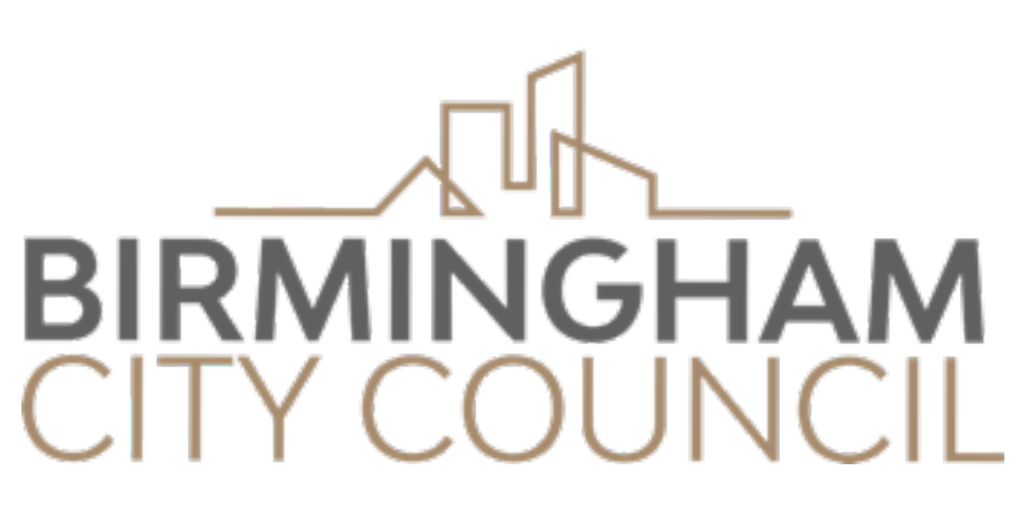
During the Birmingham City Council Meeting on October 9, 2018, the City Council voted on the following items: 1. An Ordinance “TO FURTHER AMEND THE Neighborhood Revitalization FUND BUDGET” for the fiscal year ending June 30, 2019, by transferring $916,540.50 from Neighborhood Revitalization Projects, Undesignated and appropriating $916,540.50 to Brush Trucks for Public Works for the purchase of six (6) trucks. Was this item approved? Yes What does this mean? The Council approved an item appropriating $916,540 for the purchase of six new brush trucks. Because of the current fleet that has fallen into disrepair, the Public Works Department has had to push back brush pick up from every two weeks to three weeks. Next Steps: For more information, please contact the Office of the City Council at 205.254.2294 ——— 2. A Resolution appointing one (1) member to the Birmingham Park and Recreation Board said term expiring October 8, 2022. Was this item approved? Yes What does this mean? The Birmingham City Council appointed Carly Miller as a new member of the Birmingham Parks and Recreation Board, replacing Bernard Kincaid’s expired term. Miller received five votes necessary to appoint her to the board. The term will expire on October 8, 2022. Miller is a local attorney who has represented clients on issues involving healthcare, insurance and has experience litigating civil rights violations. Miller will be welcomed at tomorrow’s special called Park Board Meeting at 9 am Wednesday October 10th. The Birmingham Park and Recreation Board is responsible for operating all City of Birmingham parks. A five-member board is appointed by the Birmingham City Council. The Board holds more than 100 pieces of property, encompassing more than 2,000 acres. Included among the park amenities are recreation centers, golf courses, tennis courts, swimming pools, walking tracks, lakes, athletic fields and picnic pavilions, just to name a few. It is the mission of the Birmingham Park and Recreation Board to offer quality leisure service programs and open park space reflective of the changing community in a clean, courteous, efficient and safe environment. Next Steps: For more information, please contact the Office of the City Council at 205.254.2294 3. A Resolution encouraging citizens of the City to attend the 2nd public meeting regarding the future of Carraway Hospital Campus on Thursday, October 11, 2018 from 4:00 – 6:00 p.m. at the BJCC Forum Building, Room J Was this item approved? Yes What does this mean? The Birmingham City Council supports the efforts to redevelop the former Carraway Hospital Campus in Norwood. On September 11th, Corporate Reality, who is purchasing the property from the Lovelady Center, held the first public meeting to get input from residents about what types of amenities and facilities they’d like to see in the space. On Thursday, October 11th, Corporate Reality will present a new plan for the property, based on that input from the public. They hope to have all plans and necessary permits approved by the City Council by the end of 2018. Next Steps: For more information, please contact the Office of the City Council at 205.254.2294. ••• Meeting highlights provided by the Birmingham City Council Public Information office.
Alabama is 2018’s 9th least financially savvy state

October is National Financial Planning Month (yes, apparently that’s a thing) and the Yellowhammer State has ranked near the bottom of the list when it comes to being a Financially Savvy State. “Financial literacy is key to sound financial health. But financial savvy is what differentiates the comfortable from the truly stable,” wrote WalletHub. “Unfortunately, a staggering lack of money smarts plagues Americans, according to a study on financial literacy conducted by the National Foundation for Credit Counseling.” Which is why personal finance website WalletHub, conducted a study on 2018’s Most & Least Financially Savvy States. In order to determine where Americans practice the best money habits, WalletHub compared the 50 states and the District of Columbia across 24 key metrics that speak to their residents’ financial savvy or the lack thereof. The data set ranges from annual savings-account average to personal-bankruptcy rate to credit-card debt as a share of income. Financial savvy in Alabama (1= most; 25= avg.) 50th: Median credit score 31st: Foreclosure Rate 50th: % of credit usage 32nd: Housing expenses as % of median home price 49th: % of unbanked households 42nd: Delinquency rate on mortgages, auto loans, student loans and credit cards 41st: % of adults with rainy-day funds 24th: Total debt as % of median income Massachusetts, New Hampshire, and North Dakota took the top three spots for financial savviness, meanwhile, West Virginia, Arkansas, and Mississippi placed in the bottom three. Here’s how Alabama compares to the rest of the country: Source: WalletHub
Alabama DHR increases subsidies to help low-income families afford child care

The Alabama Department of Human Resources (DHR) has increased subsidies to help low-income families afford child care services thanks to the $40.7 million of additional Alabama child care funding authorized by the Omnibus Bill signed by President Donald Trump earlier this year. Rates will vary depending on the market rate in each region. For example, a center in Birmingham, located in the most costly region, will see the rate for toddlers and infants go from $118 a week to $142. In Fort Payne, located in the least costly region, will see the weekly rate for toddlers and infants go form $78 per week to $110 per week. The varying costs follow a market rate survey that was conducted by DHR in 2017 to determine child care costs in Alabama by region. “We are extremely pleased to be able to provide increased subsidy payments that should improve the quality of child care in Alabama,” stated DHR Commissioner Nancy Buckner. “This will make it easier for low income working parents to find quality child care while they work to improve their family’s financial situation.” An additional bonus Also effective October 1, 2019 is an increase in the yearly Quality Rating and Improvement System (QRIS) Bonus, as well as making the QRIS Star designation available to Group and Family Day Care Homes. All licensed child care providers in Alabama can participate in QRIS, earning from 1 Star to 5 Stars. The yearly bonus is higher for each Star in good standing. These bonuses are intended to encourage centers and homes to provide higher quality care for all children in child care throughout Alabama. “We believe that the QRIS will improve the quality of care in centers that participate in the program,” added Buckner “It is our hope that more centers across Alabama will see the value in participating in QRIS and that parents will want their children to attend centers that participate in this program. The children in Alabama deserve the very best in quality childcare.” Providers who receive a Star and also accept child care subsidy will receive a tiered rate for subsidy children. Each Star will make the provider eligible for 2 percent over the base subsidy rate 1 Star is 2 percent over base rate 2 Stars is 4 percent over base rate 3 Stars is 6 percent over base rate 4 Stars is 8 percent over base rate 5 Stars is 10 percent over base rate DHR spent $98 million for child care subsidy reimbursements to providers for Fiscal Year 2018 and plan to spend $112 in FY 2019.
Southern Research is advancing green chemistry in the heart of Alabama
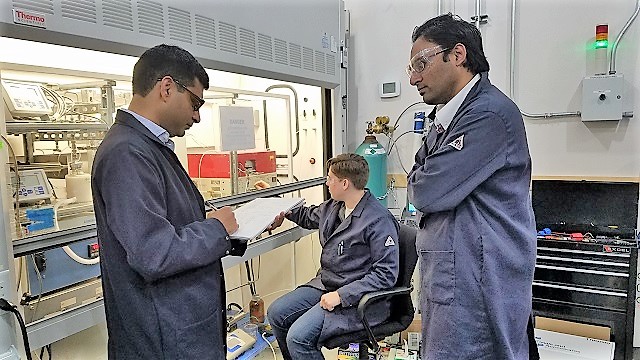
Birmingham’s Southern Research has developed a reputation in cancer treatment and other medical advancement, but an area where it is showing much promise today could end up having its greatest worldwide impact. Environmental research has emerged as an exciting field for Southern Research, so much so that it has become one of three pillars the institution is focusing on in its Change Campaign fundraising efforts. The “Earth” pillar focuses on green chemistry and ways to reduce the use of petroleum in consumer goods or find ways of recycling carbon dioxide, among other initiatives. The mind pillar focuses on neuroscience to find treatments for Alzheimer’s, Parkinson’s and Lou Gehrig’s disease, or ALS. The body pillar focuses on cancer treatments. The fundraising for green chemistry is a vital part of Southern Research’s efforts in the field. “It is highly competitive,” said Amit Goyal, director of Sustainable Chemistry and Catalysis at Southern Research. “A lot of this is high-risk, high-reward, so it is funded by federal funds.” Most federal funds are directed at universities and national labs, Goyal said. “A lot of times good ideas also do not get funded,” he said. “It’s not just that they’re not good enough.” Jonathan Geisen is an attorney with Baker Donelson law firm and is a “Change Agent” working on the Change Campaign for the Earth pillar. Green chemistry as an area of great promise at Southern Research. (Getty Images) “I think green chemistry, environmental R&D is going to have a harder time sometimes raising funds than health-care research or other medical innovations,” Geisen said. “It’s a long game and I think it’s the sort of thing that we really need to support.” Geisen said he knew more about the other areas of research than he did green chemistry when he joined the Change Campaign. “When I got involved with this particular group and met with some of the scientists and met with some of the other people involved with the program, I was just blown away,” he said. The more he knows about the areas of focus, the more excited he is to support the Earth pillar, Geisen said. “I think some of the things that Southern Research is doing – alternative fuels, different types of recycling plans – there are so many things going on here that I was unaware of until I got involved,” he said. “It’s the sort of thing that we need to support in this community to continue to improve our life.” Goyal said there are a couple of areas where Southern Research shows great promise. Southern Research is looking to use plant-based materials to replace many petroleum-based products. (Getty Images) “There are two areas that we are really excited about,” he said. “(One is) a chemical that we are trying to make from sugars extracted from plants that are used in fibers in clothing and carbon fibers. It’s a high-growth area, so it might have a lower inertia to become commercialized if we’re successful. The second is to use CO2. There is a lot of CO2 that if it can be consumed rather than just emitted it can lower greenhouse gas emissions.” Philanthropic funds give Southern Research freedom to explore those ideas. The payoff could be huge, Goyal said, as a large amount of petroleum-based products could become plant-based and have rippling benefits on the economy. “It is not easily to compete with petroleum-derived sources, these things developed over the last century,” he said. “If you think of a commodity chemical, it usually costs about $1 a kilogram, so there is not much room between the feedstock price and the final product, which is a chemical in this case. To develop processes at scale to produce at the same economic value with less greenhouse gas is quite challenging. We’re trying to address that.” Geisen said Southern Research is a vital part of the three-legged stool that makes up the entrepreneurial and innovation base for Birmingham, along with UAB and Innovation Depot. “Birmingham needs things like Southern Research,” he said. “We need places that are innovative, that are bringing the best and the brightest to Birmingham.” The Change Campaign ends October 11 with the “An Evening of Change” event. Republished with permission from the Alabama NewsCenter.
Poll finds partisan divide in concerns for election security
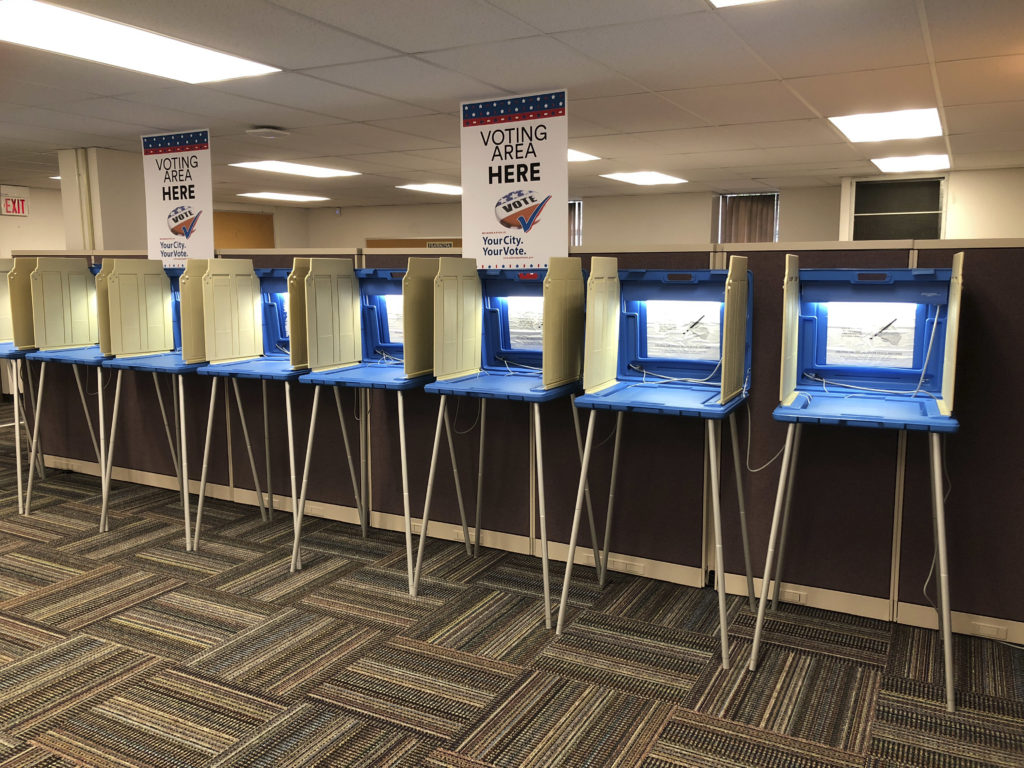
With the midterm elections less than a month away, a strong majority of Americans are concerned the nation’s voting systems might be vulnerable to hackers, according to a poll released Wednesday. That is roughly unchanged from concerns about election security held by Americans just before the 2016 presidential election, but with a twist. Two years ago, it was Republicans who were more concerned about the integrity of the election. This year, it’s Democrats. The survey from The University of Chicago Harris School of Public Policy and The Associated Press-NORC Center for Public Affairs Research found that Democrats have grown increasingly concerned about election security while Republicans have grown more confident. By 58 percent to 39 percent, Democrats are more likely than Republicans to say they are very concerned about hackers affecting U.S. election systems. That represents a flip from the results of a similar survey taken in 2016. The same partisan divide exists in the confidence Americans hold in the accuracy of vote tallies for the upcoming midterm elections. Republicans are more confident, a reversal from 2016. Nearly 8 in 10 Americans are at least somewhat concerned about potential hacking, with 45 percent saying they are extremely or very concerned. Just 22 percent have little or no confidence that votes will be counted accurately. Those results are similar to a poll conducted in September 2016. “People are right to be concerned,” said Lawrence Norden, a voting system expert with The Brennan Center for Justice at New York University School of Law. “The critical thing I hope people understand is that there are lots of things that can be done to deal with cyberattacks on our election infrastructure, and there has been a lot done since 2016.” Federal, state and local election officials have scrambled over the past two years to shore up cybersecurity defenses of election systems, improve communications about potential cyber threats and reassure the public that all steps are being taken to protect the vote. Congress has funneled $380 million to states to help cover the costs of adding cybersecurity personnel, conduct training and upgrade equipment. Much of that is in response to the 2016 presidential election. U.S. intelligence officials say Russian operatives launched a multipronged effort to interfere with the 2016 election, including a sophisticated social media campaign, the hacking of Democratic National Committee emails and the electronic scanning of state election networks. Illinois’ voter registration system was breached, but authorities say no information was altered or deleted. This year, the nation’s intelligence agencies warned that Russia and others remain interested in interfering in U.S. elections, but have emphasized that they have detected no targeting of election systems on the level seen ahead of the 2016 vote. Nearly 80 percent of Americans say they are at least somewhat concerned about the hacking of voter registration systems, voting equipment and final election results, with at least 4 in 10 saying they are extremely or very concerned about each. Among the biggest concerns of cybersecurity experts is the use, in some states, of touchscreen voting machines that do not produce a paper record. Other such machines do allow voters to verify their selections and create a paper trail for a reliable audit of election results. A U.S. Senate report earlier this year urged states to replace their paperless machines, which were used by roughly one of every five voting jurisdictions nationwide in the 2016 election. Five states — Delaware, Georgia, Louisiana, New Jersey, and South Carolina — are expected to rely on electronic machines without paper receipts during the upcoming midterm elections. At least eight others will use those machines in some counties. The poll found that just 21 percent of Americans saying they are extremely or very confident in paperless machines and another 45 percent saying they are somewhat confident. By comparison, 88 percent expressed at least some level of confidence in electronic voting machines that provide a paper receipt and 84 percent for paper ballots scanned into a machine. The $380 million sent to states from the federal government was not enough to cover the costs of replacing all such machines. Jennifer Blomqvist, a 47-year-old administrative assistant from Decatur, Georgia, said she is concerned voting systems remain vulnerable to hackers and would support a system in Georgia that produced a paper record. “As long as they are electronic, anybody and everybody can go in and hack,” Blomqvist said, adding she still hopes all votes will be counted accurately. “I want to trust the system, for as old as it is.” The survey also found limited support for online voting (28 percent in favor) and for the exclusive use of mail-in ballots (19 percent in favor). Younger voters, those age 18 to 29, are more supportive of online voting than older adults. Even so, less than half of young adults favored online voting. Three states — Colorado, Oregon and Washington — conduct all elections with mail-in ballots, but there is not widespread support for it. Just 19 percent of adults favor such a system, with 58 percent opposed. ___ The UChicago Harris/AP-NORC poll of 1,059 adults was conducted Sept. 13-16 using a sample drawn from NORC’s probability-based AmeriSpeak panel, which is designed to be representative of the U.S. population. The margin of sampling error for all respondents is plus or minus 4.3 percentage points. Republished with permission from the Associated Press.

